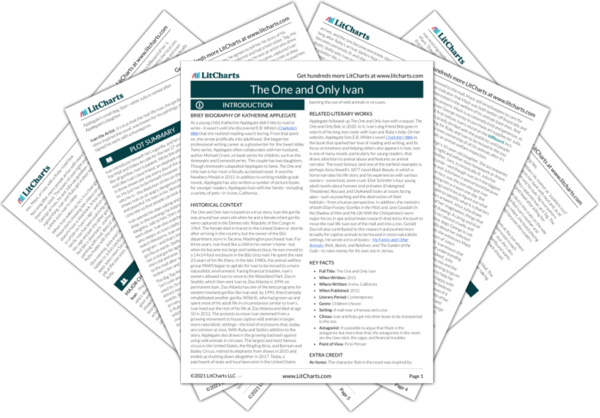Previous
hello—the littlest big top on earth
|
Previous
hello—the littlest big top on earth
|
The One and Only Ivan: gone—the beetle Summary & Analysis |
Next
change—worry
|


Upgrade to unlock the analysis and theme tracking for all of The One and Only IvanThe One and Only Ivan!
Get LitCharts A+